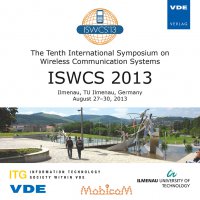Impact of Spatio-Temporal Correlation in Cooperative Spectrum Sensing for Mobile Cognitive Radio Networks
Conference: ISWCS 2013 - The Tenth International Symposium on Wireless Communication Systems
08/27/2013 - 08/30/2013 at Ilmenau, Deutschland
Proceedings: ISWCS 2013
Pages: 5Language: englishTyp: PDF
Personal VDE Members are entitled to a 10% discount on this title
Authors:
Caso, Giuseppe; Nardis, Luca De; Benedetto, Maria-Gabriella Di (DIET Department, Sapienza University of Rome, Rome, Italy)
Holland, Oliver (Institute of Telecommunications, King’s College London, London, UK)
Abstract:
Cooperative Spectrum Sensing (CSS) has been proposed as a solution to increase accuracy of spectrum sensing in a Cognitive Radio Network (CRN), but with a few exceptions the design and performance evaluation of CSS schemes has focused so far on static networks, neglecting the role and potential impact of terminals mobility, in conjunction with channel spatio-temporal correlation. This work addresses such issues by proposing a CSS scheme with a correlation-based nodes selection and by evaluating its performance in a realistic simulation environment using accurate models for signal propagation, degree of correlation among sensing measurements and mobility behaviour. The proposed scheme adopts the well known Moran’s I statistical index, defined in 1950 by P.A.P. Moran, as the metric for determining the degree of correlation between Secondary Users (SUs), and selects a subset of SUs characterized by low correlation and high expected sensing performance in order to achieve satisfactory network sensing performance while reducing the overhead related to sensing in terms of bandwidth utilization and energy consumption. The proposed scheme is compared with an alternative solution, where all SUs participate in the sensing process, by means of computer simulations considering both static and mobile SUs under accurate models for channel correlation and mobility. Simulation results, while confirming that the proposed scheme achieves a reduction in the number of devices involved in sensing without significant performance loss, hint that the advantage guaranteed by SU mobility might be lower than what estimated by previous studies under simpler assumptions.


